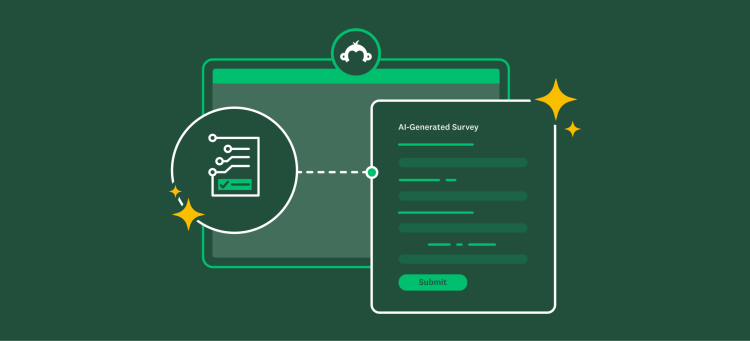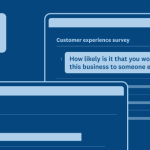In a recent study, a whopping 94% of students said that they’d like to use their smartphones for academic purposes during teaching and learning sessions, with 75% of them believing that this has improved their ability to learn and retain information in the past.
Higher education academic staff are increasingly moving away from an outright ban on smartphones during teaching and learning sessions and, instead, exploring innovative ways to incorporate smartphones into their teaching methods. In fact, many have turned to online polls as a new way to engage students, encourage participation and spark conversation in the learning environment.
A closer look at polls
The popularity of polling has increased in recent years, with Instagram releasing their polling feature in late 2017, following in the footsteps of Facebook and X (formerly Twitter). Only six months later, approximately 30% of the platform’s influencers were using polling to gather feedback from their viewers.
While you may not be looking to become an Instagram influencer any time soon, you can definitely still leverage online polls to engage students more effectively, enhance the teaching and learning experience and improve staff-student relationships across your campus.
Remember those 94% of students we mentioned who wanted to use their smartphones for academic purposes during teaching and learning sessions? Well, 59% of them felt that the use of polls during those sessions would allow them to better engage with the content being taught, which is all the more reason to experiment with integrating polling into your curriculum!
Establishing a NO phones in the learning environment strategy
When integrating phones into the teaching and learning experience, it’s important to develop a strategy that keeps students focused on the session and discourages general web browsing.
Avoid eating into teaching and learning time by seamlessly integrating your poll into slides with a QR code. Get students to scan the code using their device and then watch the answers populate in real time to spark discussion.
With polls, students will participate more willingly, express what they are struggling with and get a sense of their peers’ opinions while still retaining their anonymity. This allows you to avoid awkwardly ‘voluntelling’ students to answer questions in front of their peers.
Here are a few easy ways to integrate polling into the teaching and learning environment:
- Quizzes: Keep the competition alive with quizzes during teaching and learning sessions. Creating a short quiz is an engaging way to connect with your students on the spot and to help them retain new information in a fun way.
- Check-ins: Check in with your students as you deliver new information by polling them halfway through each teaching and learning session. Ask questions that will help you determine which topics they are struggling with so you can adjust your teaching on the fly.
- Research during teaching and learning sessions: Collect students’ opinions and spark meaningful discussion about social and campus issues such as diversity, freedom of expression, accommodation and more.
- Course feedback: Collect students’ opinions about teaching style, relevance of material, pace of the teaching and learning session, and more, to get insights into how your students learn.
TIP: Did you know that polling is also a fun and easy way to check attendance? Post a unique QR code on the board at the beginning of a teaching and learning session and ask students to select their name to report attendance. This takes almost no time and 60% of students said they’d be willing to try it.
How Emory University’s VP of Academic Planning uses surveys and polls to foster better relationships with students
In a 2016 survey, students identified kindness, integrity and understanding as the qualities that were most likely to improve or change their student experience. But as hard as your teaching and non-teaching staff may try, sometimes it’s difficult to make a meaningful impact on students’ lives while managing multiple courses and priorities.
Nancy Bliwise Ph.D., Vice Provost of Academic Planning at Emory University in Atlanta, Georgia, found that consistently asking students for feedback has had a huge impact on how she manages her teaching and learning environment. “I don’t think I can emphasise enough, there is no under-estimating how much simple assessments influence the student perception and the quality of the instructor-student relationship,” she says.
Dr. Bliwise, who uses surveys during teaching and learning sessions to continuously improve her teaching methods, says she is less afraid to try new things with her students, because students know she will ask for feedback and change whatever isn’t working. From her surveys during sessions, she found, not surprisingly, that weekly quizzes were one of students’ least favourite activities. Although she didn’t actually scrap the pop quizzes, she was able to open a dialogue and explain her teaching methods to give students a better understanding of the reasoning behind the curriculum. This is a simple but powerful example of how collecting and acting on feedback can help improve the teacher-student relationship and proactively address concerns.
TIP: Polls offer a great way to get a pulse on what your students might not understand. Make the most of this opportunity by setting a benchmark or goal for yourself after data collection. What are you going to do with the data you’ve collected? Following up with your students on their feedback however you can shows that you care about making positive changes on campus.
Get started with online polls
Create and deliver online polls quickly and easily. If you don’t already have a SurveyMonkey account, sign up for free and you can create and launch your online poll in minutes.
Want to learn more about polls?
In this webinar, Nancy Bliwise Ph.D., Vice Provost of Academic Planning and Professor of Pedagogy from Emory University, shares how she uses surveys to improve learning environment management, learning itself and the student experience.



